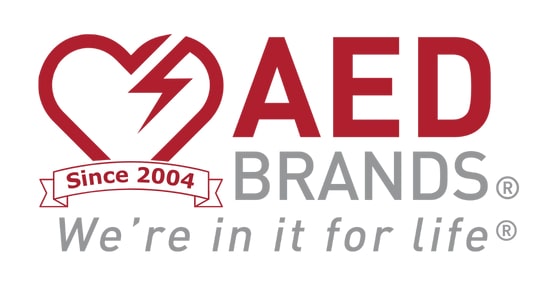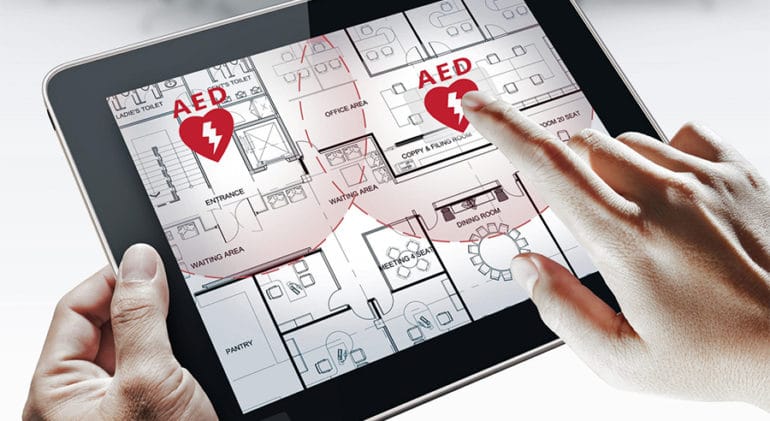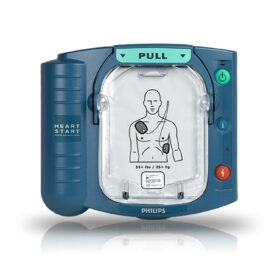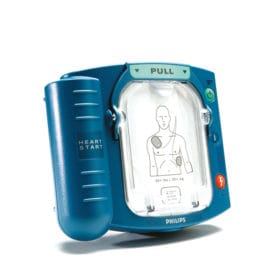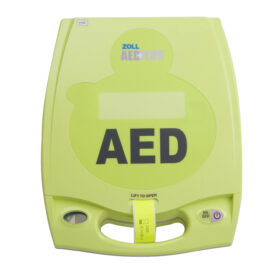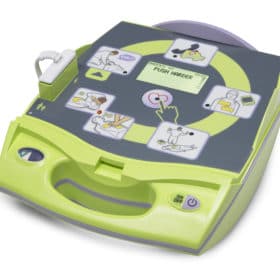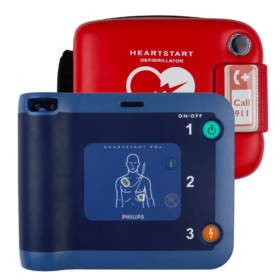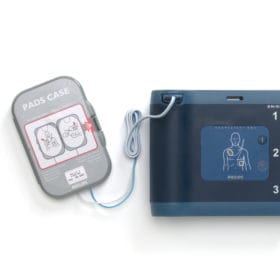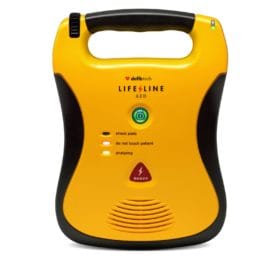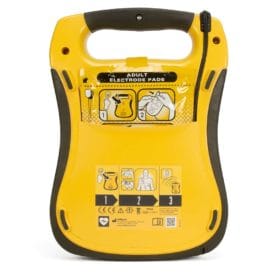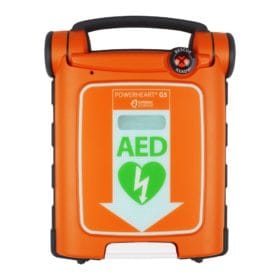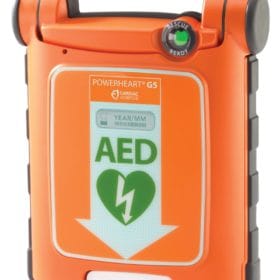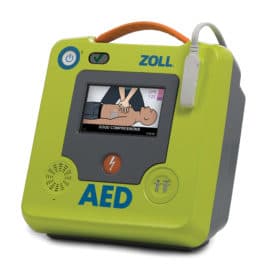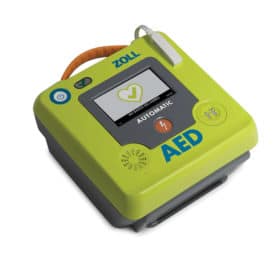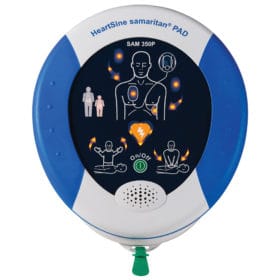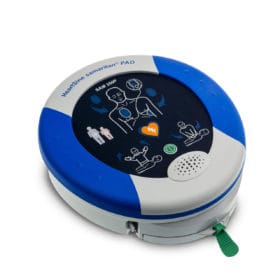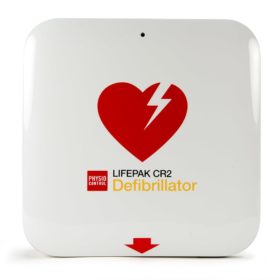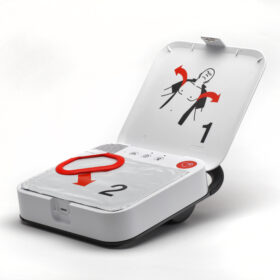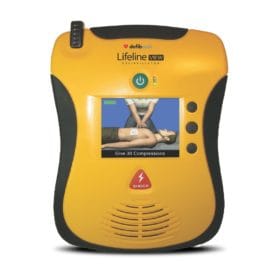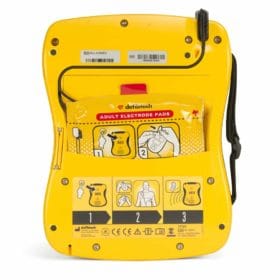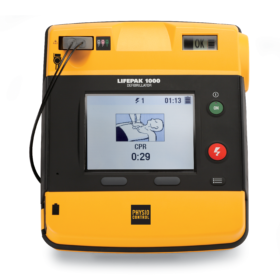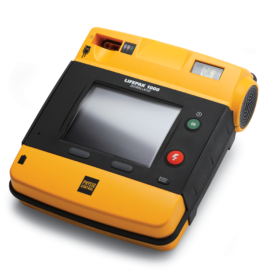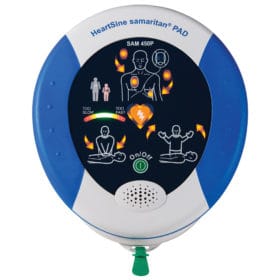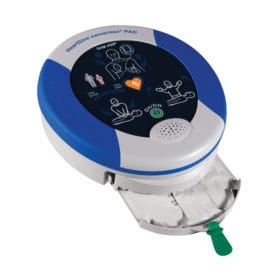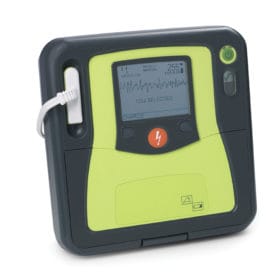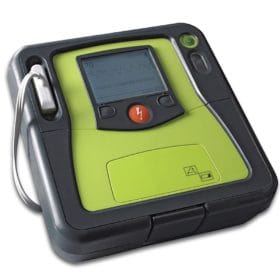- Your cart is empty
- Continue Shopping
AED Response Protocols for Defibrillator Public Access Programs
AED Response Protocols
From initial assessment to defibrillator application and safety precautions, we suggest your team follows these response protocols.Initial Assessment
The first ERT or Early Defibrillation Response Team member responding conducts an initial assessment to determine the level of response required from the team and outside responding agencies. This initial assessment includes:
- Assessment of the scene for safety of self and other responders.
- Use of gloves and other universal precautions prior to patient contact.
- Assessment of the patient for absence of responsiveness, respiration, and signs of circulation.
- Assessment for additional information about the patient or scene.
Information gathered at the scene should be relayed to ___________ [communication center for User Facility] for dissemination to responding parties.
Early Defibrillation Response Plan and 911
The initial ERT or Early Defibrillation Response Team responder verifies that the AED response plan has been activated and that 911 has been notified. If the defibrillator is not present at the scene, the responder verifies that it is being brought immediately.
CPR Procedures
In the absence of the defibrillator, the ERT or Early Defibrillation Response Team member initiates the ABCs of CPR – establishing an airway, ventilating the patient, and beginning chest compressions – until the defibrillator arrives.
Defibrillator Application
Turn on the defibrillator as soon as it arrives at the scene and follow its prompts. If more than one ERT or Early Defibrillation Response Team member is present, one can apply the defibrillation pads and operate the defibrillator while the other continues CPR until told to stop. Perform any special procedures required (removal of medication patches, shaving of excessive chest hair, etc.) as outlined in the early defibrillation response protocol guidelines (section 10) prior to placing the pads on the patient’s bare chest.
Defibrillator Heart Rhythm Analysis
When the pads are properly attached to the patient and connected to the defibrillator, the device will automatically analyze the patient for a shockable rhythm – such as ventricular fibrillation (VF). Ensure that no one touches the patient during rhythm analysis. On completion of rhythm analysis, the defibrillator will prompt the rescuers as to the appropriate course of action. Follow the device prompts in treating the patient.
Defibrillation Safety Precautions
If the defibrillator gives a “Shock Advised” prompt, first ensure that no one is touching by examining the patient area and loudly stating “I’m clear, you’re clear, everyone clear!” Then press the shock button to deliver a shock to the patient as prompted. Shock delivery will be followed by re-analysis of the patient’s heart rhythm by the defibrillator. If additional shocks are advised by the defibrillator, follow the above sequence until the defibrillator prompts otherwise or EMS arrives.
Defibrillation Shock Sequence
Based upon early defibrillation response protocols and in accordance with defibrillator prompts, administer a shock to the patient, followed by two (2) minutes of CPR if signs of circulation are absent.
No Shock Advised Procedure
If the defibrillator gives a “No Shock Advised” prompt and the patient is not breathing and has no signs of circulation, administer CPR until the patient regains signs of circulation, the defibrillator advises to stop CPR for analysis, or EMS arrives and assumes care of the patient. If the patient is not breathing but does have signs of circulation, perform rescue breathing until the patient regains adequate respiration, the defibrillator advises to not touch the patient for analysis, or EMS arrives and assumes patient care. Conduct continuous monitoring of the patient’s condition and evaluation of rescue in accordance with ERT or Early Defibrillation Response Team training.
Patient Monitoring
Once the defibrillator has been applied to the patient, do not turn off the defibrillator or remove the defibrillation pads unless prompted by the device (e.g., “Replace battery” or “Replace pads”). The defibrillator will continue background monitoring of the patient’s heart rhythm and alert the rescuers if additional shocks are required. Continue to assess the patient’s airway, breathing, and circulation and provide CPR as indicated.
Loading...
The best AED for your needs
Philips HeartStart FRx AED with FREE Carry Case 861304
Would you like these results sent to your email?
If so, just fill our your email address below and submit.
